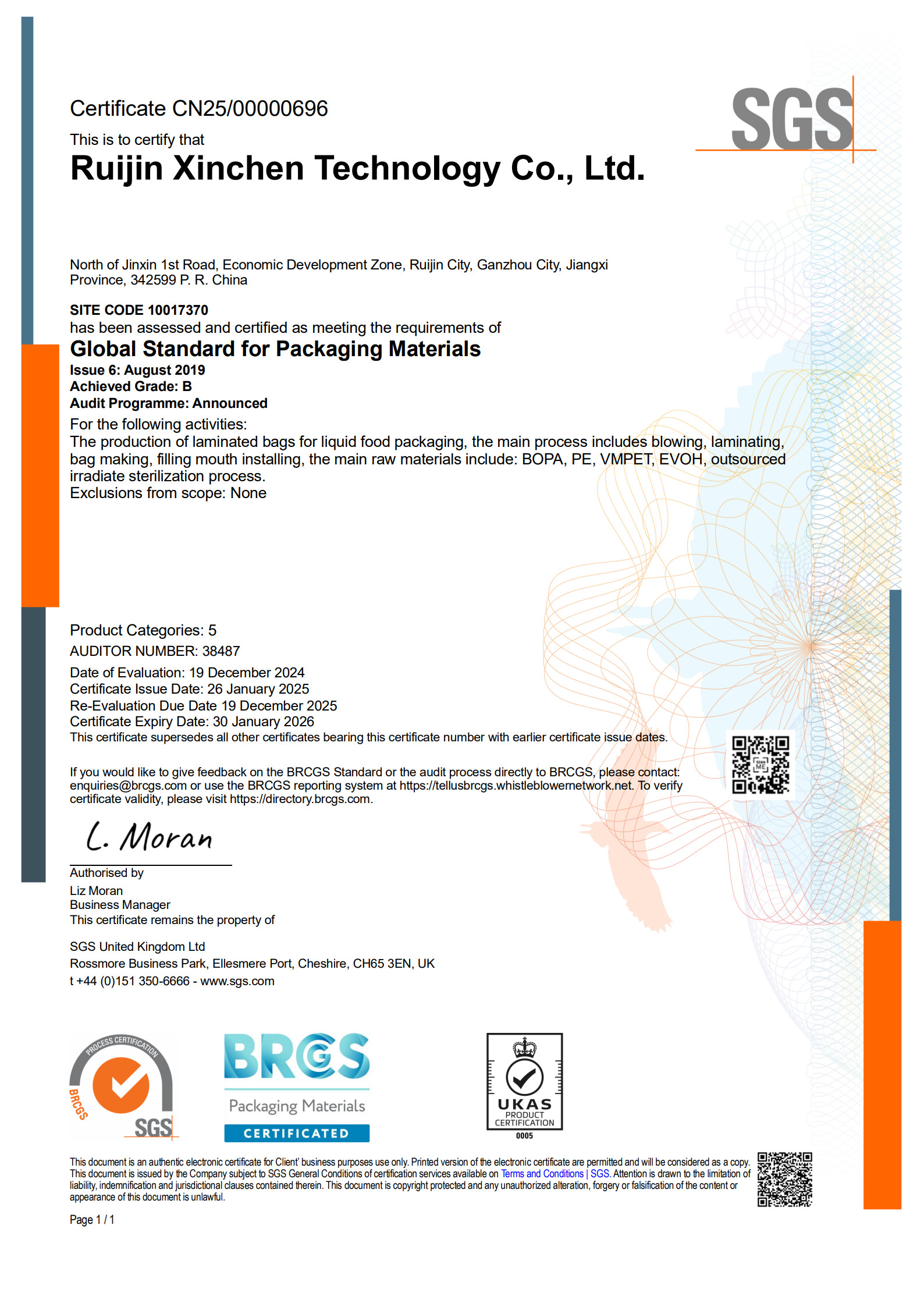Global Concern for Food Packaging Safety In recent years, the safety of food packaging materials has attracted significa...
READ MORE
Global Concern for Food Packaging Safety In recent years, the safety of food packaging materials has attracted significa...
READ MOREThe Core Value and Industrial Significance of Aseptic Bags Aseptic Bags, with their stable and clean packaging environme...
READ MOREIn the modern liquid packaging industry, the Bag-In-Box Liquid Valve, as a highly efficient, safe, and convenient liquid...
READ MOREWith increasing global demands for food safety, pharmaceutical storage and transportation, and liquid packaging, aseptic...
READ MOREIn the modern food and beverage industry, the development of packaging technology has become a crucial factor in improvi...
READ MORETo ensure the sterility of packaging bags, manufacturers of aseptic packaging bags usually adopt a series of specific manufacturing processes and technologies. Here are some key steps and techniques:
Film blowing: First, in workshops with cleanliness levels of C and above, manufacturers will turn on the air purification system and disinfect and sterilize the workshop and operators to ensure that the operating environment meets the set standards. Then, the purified polyethylene particles are blown into a film at a certain temperature to form the original film material.
Cutting: The tubular film obtained after film blowing will be cut into film tubes of different sizes according to the size required by the customer.
Heat sealing bag making: Use a heat sealing machine to seal the film tube to form the basic shape of the sterile bag.
Vacuum packaging: The sealed sterile bags will be multi-layered vacuum packed in a certain number to ensure that they are not contaminated during the subsequent process.
Sterilization: The vacuum-packed sterile bags are sterilized, usually using gamma rays to achieve the sterility requirements of the product.
In addition to the manufacturing processes described above, there are specific techniques used to ensure sterility:
Use sterile materials and equipment: Use sterile materials and equipment throughout the production process to avoid microbial contamination.
Filtration technology: Microporous filter membrane is used to filter air and gas to remove microorganisms and particles to ensure a sterile environment during the packaging process.
Aseptic operation: Packaging operations are performed under aseptic conditions to prevent microbial contamination.
In addition, some specific sterile packaging methods are also used to ensure sterility, such as embedding, filling and sterilization packaging. These methods prevent microbial contamination by placing goods in sterile packaging bags or containers, sealing and sterilizing them.
In order to ensure that the products meet strict hygiene and barrier requirements, sterile bag suppliers usually have a series of rigorous testing procedures. The following are some testing procedures that may be included:
Microbiological testing: This is a critical step to ensure the sterility of sterile bags. Suppliers may use sterility testing methods, such as placing sterile packaging materials on sterile agar plates, and applying a suspension of specific microorganisms (such as Serratia marcescens) to the surface of the materials and observing the plates. Whether there is growth will determine the amount of microbial penetration.
Physical property testing: including thickness measurement, tensile strength and elongation at break, etc. These tests ensure that the physical properties of the sterile bag meet standards, thereby ensuring its barrier properties and durability to a certain extent.
Appearance inspection: Conduct visual inspection under natural light to ensure that the surface of the sterile bag is smooth and uniform, with no obvious color difference or defects.
Specification size measurement: such as bag length and bag width, etc., to ensure that the sterile bag meets the predetermined specifications.
Internal pressure damage testing: For sterile medical device packaging, suppliers may perform internal pressure damage testing to evaluate whether the package will rupture or be damaged when subjected to internal pressure.
Sealing test: For example, the soft packaging seal burst test using the internal air pressure method of the restraint plate is used to detect the minimum burst strength of the peripheral seal of the flexible package to evaluate its sealing and barrier properties.


+86-15779056622

